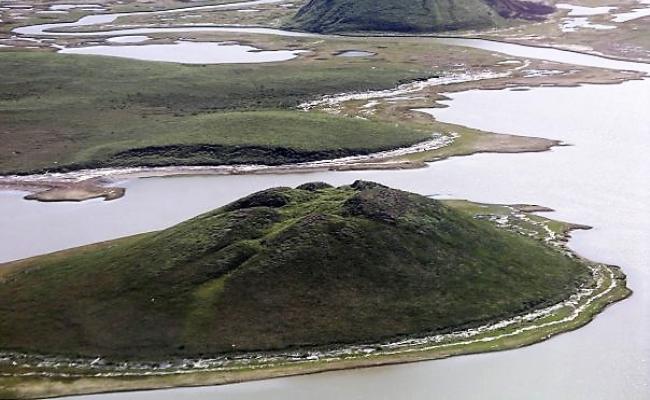Arctic Craters Caused by Climate Change

Unerupted Pingos near Tuktoyaktuk, Northwest Territories, Canada. A pingo, also called a hydrolaccolith, is a mound of earth-covered ice found in the Arctic and subarctic that can reach up to 70 metres (230 ft) in height and up to 600 m (2,000 ft) in diameter. (Photo: Emma Pike)
Mysteries of massive holes forming in Siberian permafrost unlocked by scientists.
As reported by CNN, a massive crater appeared in the Siberian tundra last year, caused by an exploding pingo, leading to a blowout of methane gas throwing ice and rock hundreds of feet away and leaving a gaping circular hole in the landscape.
It was the 17th hole to appear in the remote Yamal and Gyda peninsulas in the Russian Arctic since the first was spotted in 2013. The craters are thought to be linked to climate change. Drone photography, 3D modelling and artificial intelligence are helping to reveal the cause behind the craters.
It is first time researchers have been able to fly a drone deep into a crater, reaching 10 to 15 meters below ground, allowing them to capture the shape of the underground cavity where methane had built up.
The findings of the team of Russian scientists who visited the crater in August 2020, were published in the journal Geosciences last week. The drone took around 80 images, allowing the researchers to build a 3D model of the crater, which is 30 meters deep.
The model, which showed unusual grottoes or caverns in the lower part of the crater, confirmed that methane gas builds in a cavity in the ice, causing a mound to appear at ground level. The mound grows in size before blowing out ice and other debris in an explosion and leaving behind the massive crater.
What's still unclear is the source of the methane. It could come from deep layers within the Earth or closer to the surface, or a combination of the two.
Permafrost is a natural reservoir of methane, a potent greenhouse gas much more effective than carbon dioxide at trapping heat and warming the planet. Warmer summers have weakened the permafrost layer, which acts as a cap, making it easier for gas to escape.
Some experts estimate that soils in the permafrost region hold twice as much carbon as the atmosphere does, making the region extremely important in the fight against climate change.
While these craters have appeared in a very sparsely populated region, they do pose risks to Indigenous people and to oil and gas infrastructure. The holes are usually found by accident during helicopter flights or by reindeer herders.



